A worsening cycle of storms and drought is threatening safety and food supply for many in southern Africa. Tropical Storm Ana struck Malawi in January, washing away nearly 200K acres of crops and displacing hundreds of thousands of people. Four more large storms have swept through the area since.
GiveDirectly is providing emergency cash relief to help families rebuild their lives. We’ve also launched a program to help farmers build resilience for future climate-caused droughts and floods. Globally, these sorts of adaptation projects are dramatically underfunded compared to greenhouse gas mitigation efforts.
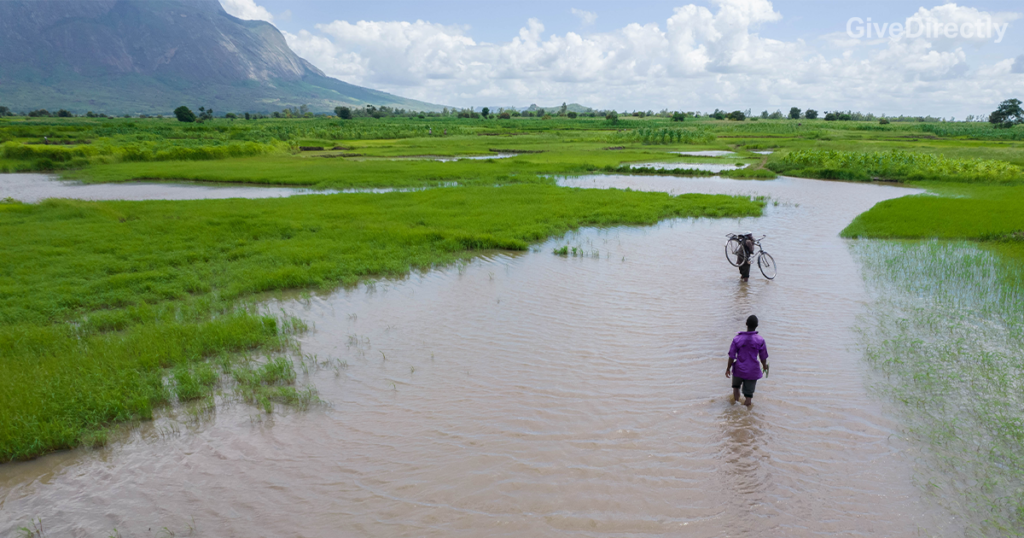
Climate disasters disproportionately impact the poorest
While people living in extreme poverty are the least responsible for the carbon emissions that have worsened climate disasters, they live in regions bearing the brunt of the impact. In the last decade, Malawi has suffered frequent adverse weather events and lowering crop yields, a bad formula for a country where 80% of adults are subsistence farmers – growing only enough to support themselves.
Farming innovations improve disaster resilience
We should not accept climate suffering as an unavoidable fate. There are innovations farmers in poverty can adopt now to improve their resilience to drought and storms. This month, GiveDirectly has launched a unique cash program for 5,000 farmers in Balaka, Malawi. Our local partner, United Purpose, is holding trainings in tandem* to educate communities on climate smart agriculture (CSA) practices:
New seed varieties
Certified maize seeds mature earlier plus are flood and disease resistant.
Cost: $6-7 per 1kg bag
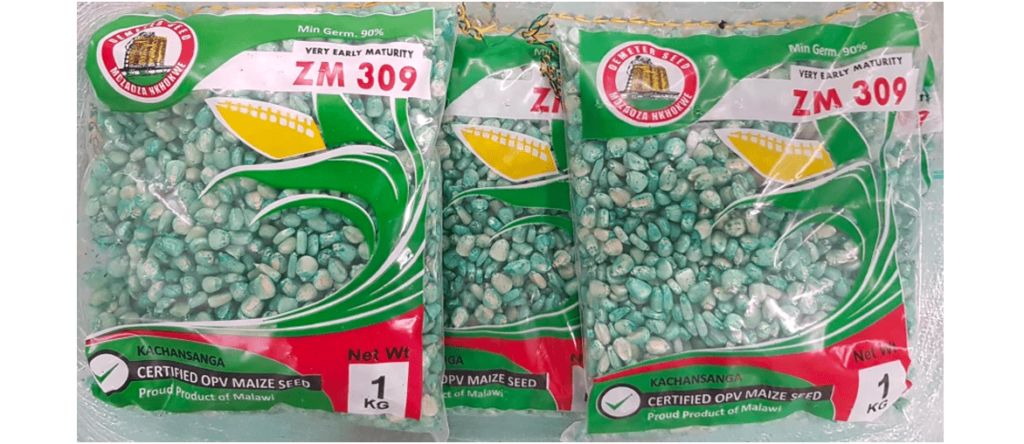
Crop rotation & intercropping
Cycling and mixing crops improves soil health and yields.
Cost: $1-7 per kg bag
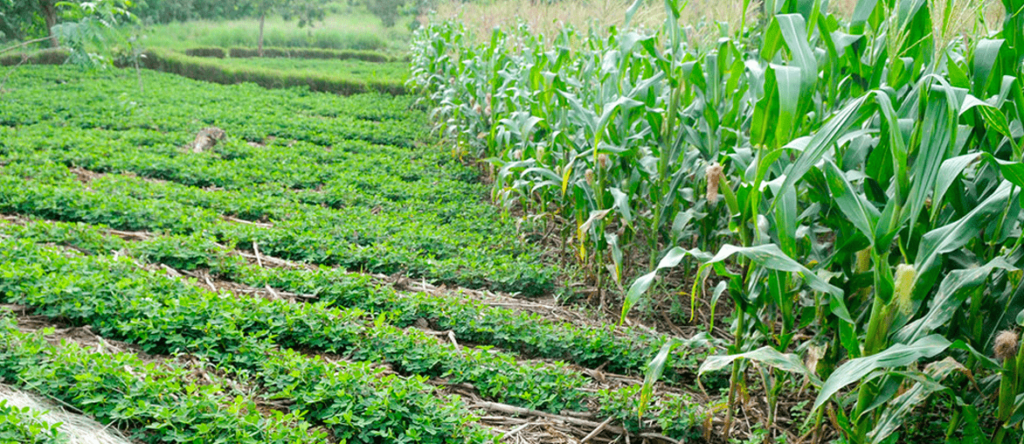
Mbeya manure
Uses mostly organic materials plus urea fertilizer. Materials are mixed and sealed for 3 weeks. Can double crop yields.
Cost: $21 per 50kg bag
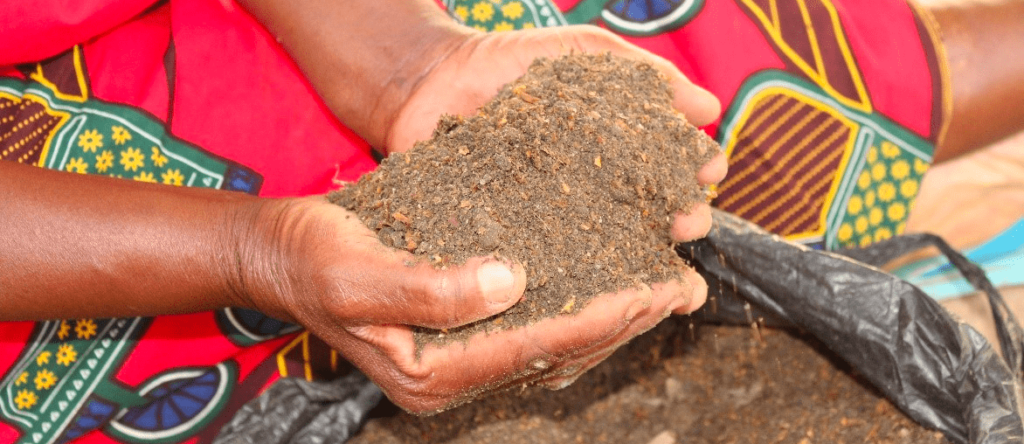
*Payments in this program are still unconditional. Our two organizations’ work is coordinated and sequenced but communities are not informed of the connection in order to not create an unwanted expectation that they spend transfers on farming efforts.
Cash lets farmers invest in these techniques & technologies
When living on <$1.90, even these modestly priced innovations are difficult to justify. That’s why we’re sending farmers a $400 payment in both April & October, timed with the cropping and rain-fed seasons respectively. We’re expecting that a well-timed influx of unconditional capital combined with CSA training will help these households build more crop resilience.
First payments went out last week. It’s too early to measure impact, but we’ll track investments, seed purchases, and crop yields over the rest of the year. Anecdotally, families cashed out and spent on items both agriculture related and not:
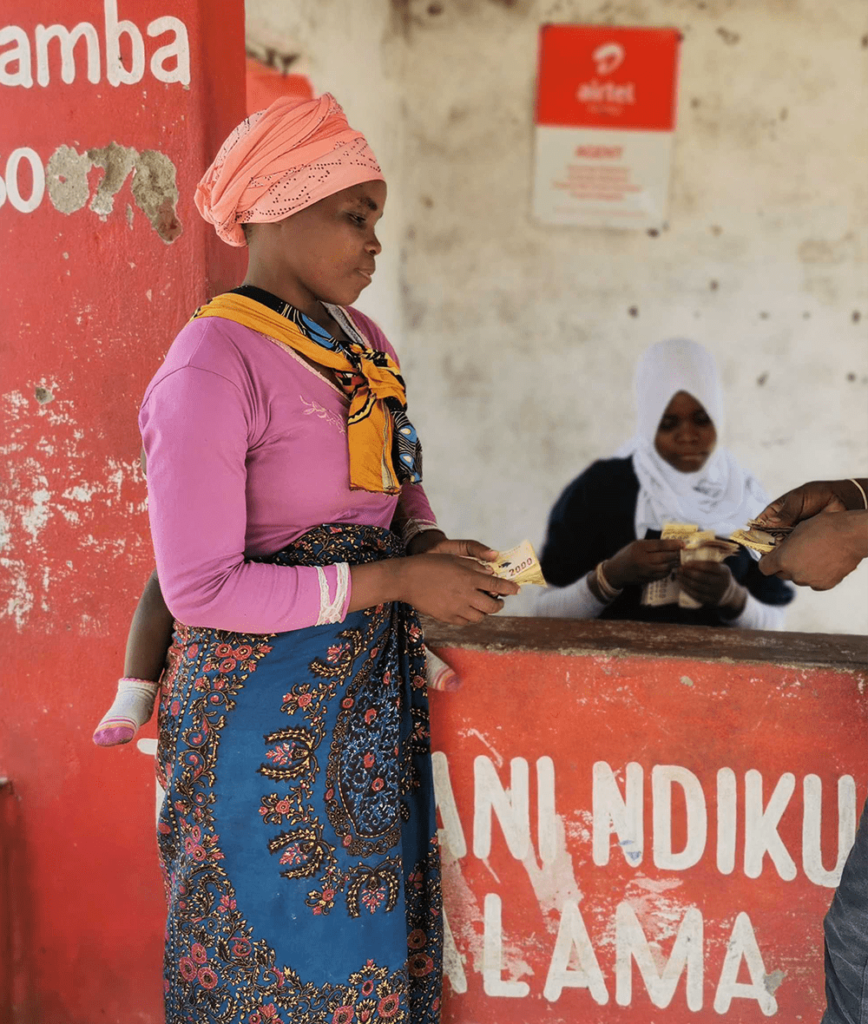
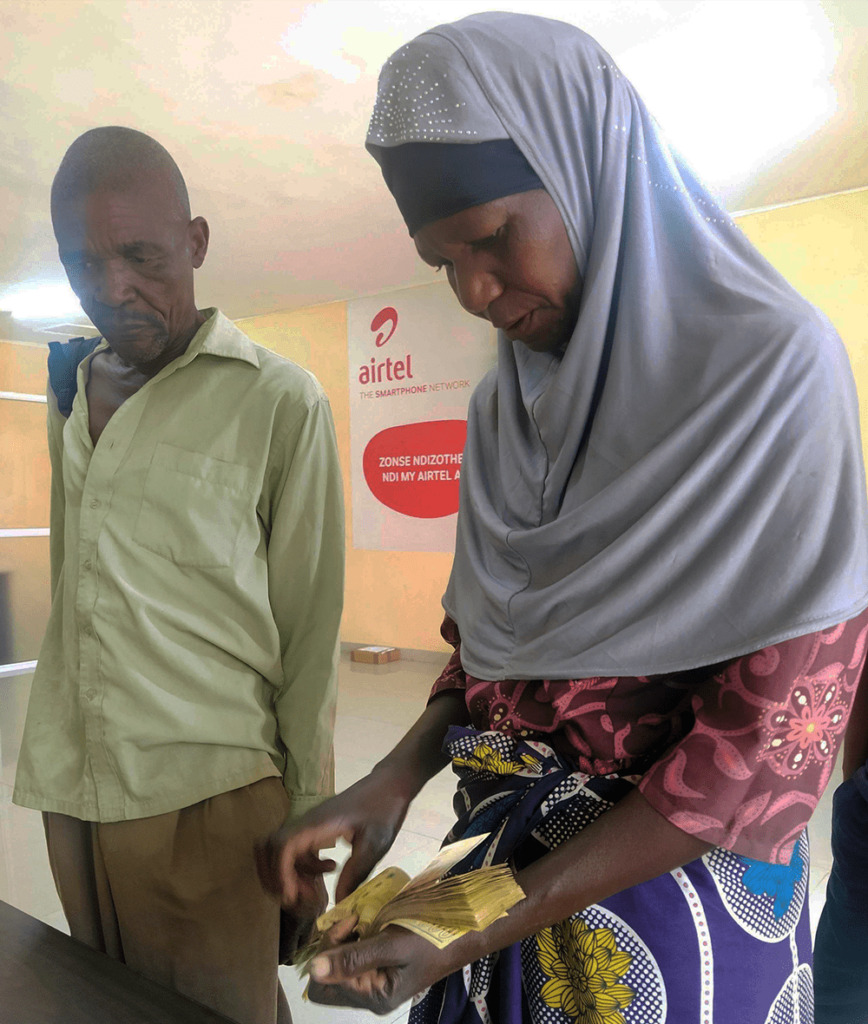
Cash is, after all, flexible – spending a cash transfer on chickens now may mean generating other funds for climate smart agriculture efforts down the road.
Edit: June 2023 – Update from surveying.
Since publishing, we surveyed 482 households in this program to see if giving them cash led to them adopting more climate smart farming practices and found:
- more are using better seeds – there was a 48% increase in the number of recipients buying seeds from certified seed distributors (these are more drought & flood resistant than reusing from old crops)
- more are intercropping – nearly everyone continues to grow maize but the survey found a 16% in the number of recipients growing pigeon nuts, 19% increase in groundnuts, and a 57% increase in leafy vegetables. (this improves soil health and yields)
- fewer are food insecure – there was a 60% decrease in the proportion of recipients who reported going a whole day without eating
Wealthy countries underinvest in climate tech for the poorest
Today, over 90% of climate financing goes to mitigation efforts with the small remainder going to adaptation and resilience project like ours. The UN has called for a 50/50 split on mitigation and adaptation, a target the global community is missing widely:

Some will argue that adaptation is not a ‘solution,’ but who determines the time-scale of a solution? While mitigation investments will hopefully lead to breakthroughs that curtail climate disasters, in the near future it will not stop them. Over the next 2 decades, global temperature will almost certainly cross the 1.5°C warming threshold set by the Paris Agreement, creating severe human risks.
Climate innovation means more than just green tech. Neglecting adaption as a necessary part of the solution is depriving the people bearing the brunt of the impact the tools to survive.